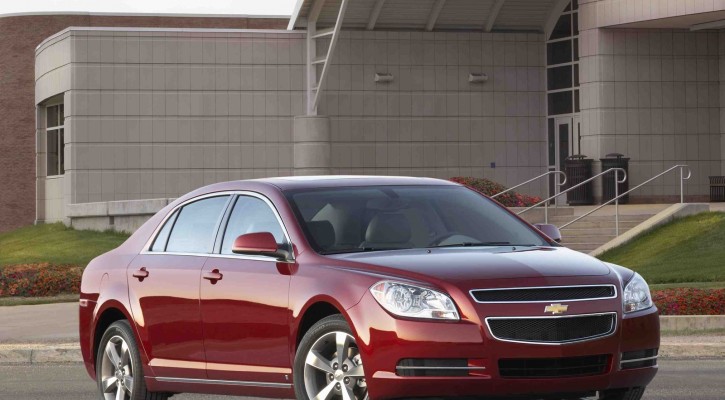
Consumer Reports Lists Safest Used Cars For Teens
March 12, 2015
Consumer Reports has come out with a list of what they believe are the safest cars under $10,000 for teens. This list, combined with a similar list by the Insurance Institute for Highway Safety (IIHS) published last summer, can be a valuable guide for parents who are in the market for a used car for their teen driver.
Both the IIHS list and the Consumer Reports list are similar in that they rely on crash data and on safety equipment, either standard or optional, included in each vehicle model. In both lists, the standard safety equipment includes:
- Electronic Stability Control (ESC) – ESC helps the vehicle remain on the road and prevents rollovers in emergency situations. According to Consumer Reports, ESC is, statistically, the biggest safety improvement since seat belts. ESC became mandatory on all vehicles built after 2012 but many manufacturers started offering it as standard equipment in prior model years. According to Consumer Reports, vehicles equipped with ESC “will also have anti-lock brakes and probably traction control, since they require all the same hardware components.”
- Side Impact Air Curtains – Front airbags are mandatory on all vehicles but side impact air curtains are important to protect the vehicle occupants in side crashes.
While not specifically listed as a safety device, those vehicles with adjustable steering wheels and foot pedals allow shorter drivers to adjust the seat a safe distance from the front airbag while still being able to comfortably reach the foot pedals and see over the steering wheel.
Another feature that buyers should look for are adjustable shoulder harnesses. Adjustable shoulder harnesses allow drivers of any height to comfortably place the shoulder harness in the proper position across the shoulder bone and centered over the breastbone. Many drivers, especially shorter ones who find that the shoulder harness rubs against their neck, may try to place the shoulder harness behind them – an extremely dangerous practice.
As in the IIHS list, the Consumer Reports list includes vehicle options that buyers should steer away from if the car is being purchased for a teen driver. Those options include:
- MyFord Touch – ”a distracting infotainment system.”
- Toyota RAV4 – Optional third seat – too many teens in a vehicle are distracting and play a large part in teen crashes.
The Consumer Reports list points out Bluetooth and hands free phone systems included in some models but buyers should be aware that some state laws prohibit the use of any type of wireless communications by teens while driving, whether it’s hands-free or not.
For more information visit: Safest used cars under $10,000 for teen drivers
Photo courtesy of: cargurus.com

Planning For A Fun And Safe Spring Break
March 3, 2015
It’s that time of year again and the warm beaches of Florida are going to be prime destinations for spring breakers. Spring break is a lot of fun and can provide a lifetime of memories but it can also, just as easily, turn tragic. If you’re headed to the coast, remember the lessons learned in your drug and alcohol course as well as our top safety tips for a safe spring break.
- Maintain a buddy system – Travel with friends and stay with those friends to keep each other out of trouble. Along with college students, spring break also attracts unsavory types such as thieves and sexual predators. Don’t go off alone with someone you don’t know.
There are a lot of reasons not to drink but, if you feel you must:
- Have a plan – Plan on how you’ll get home safely, either by cab or a designated driver. Plan to limit your drinking. If you make a plan before you go out, chances are, you’ll stick with that plan but if you wait until after you’ve been drinking to decide what to do, your judgment will be clouded and you could drink yourself into trouble.
- Limit your drinking – While the effect of alcohol is different on everyone, a general rule of thumb is that it requires at least one hour for the body to process the alcohol from one drink. The more you drink, the longer it takes for the body to process the alcohol and get it out of your system. For females, who are generally smaller, one drink can affect you much more quickly than it will for a male and can take longer for the body to process.
- Binge drinking is deadly – Your body can only process so much alcohol before it becomes toxic. Alcohol affects your motor skills. You quickly start to feel the effect on the voluntary motor skills that control your speech, vision and ability to walk but too much alcohol can shut down the involuntary muscles controlling the heart and lungs and death from alcohol poisoning is the result. Drinking games look like fun but, for your own safety, make a plan before you go out not engage in any games that could lead to alcohol poisoning.
- Know what you’re drinking – Different drinks have different amounts of alcohol. Some sweet, flavorful cocktails can have up to four shots of liquor. Depending on your body size, a single cocktail can immediately put you over the legal limit.
- Females; guard your drinks – A female who leaves her drink unattended can easily become the victim of a sexual predator who has slipped Rohypnol (the date rape drug) into her drink. If you leave your drink unguarded at any time, dump it and get a fresh drink.
- Alcohol and the sun don’t mix – If you only drink alcoholic drinks when you’re out in the sun, you can easily become dehydrated. The combination of the sun and activities can quickly wear you out and alcohol will compound that effect. Switch off with water or fruit drinks.
- If it seems like a crazy stunt, it’s probably too dangerous – After drinking, spring breakers have died trying to show off by balancing on bannisters, doing pull ups off of hotel balconies, or trying to dive from a balcony into the hotel pool. Unfortunately, instead of stopping them, their friends, also under the influence of alcohol, urged them on. If you see someone trying to pull a dangerous stunt, try to stop them or call local security. You could save their life.
- Scooters and mopeds – If you rent a scooter or moped, make sure you’re familiar with its operation and watch out for other drivers on the road who may not be watching out for you. Never try to operate a scooter or moped if you’ve been drinking.
- Don’t party to the end – Don’t try to party up to the last second before leaving for home. If you’re driving, everyone in your party should try to get a good night’s sleep before heading home. Driving drowsy is just as dangerous as drunk driving.
- Stay alert driving on the road – Share driving duties and switch off with other drivers to remain alert. Long periods on a boring interstate can lead to “highway hypnosis”; avoid that by stopping every two hours or 100 miles to refresh yourself or take a short nap. If you have a long way to drive, don’t try to do it in a single trip. Stop and get some rest before continuing.
- DON’T DRIVE DRUNK OR DRUGGED!!!! – It should go without saying but there are far too many tragedies on spring break because people ignored this simple piece of advice!

YouTube Videos Fail To Show Whole Story
February 25, 2015
YouTube videos of alcohol use by young people fail to show the whole story and can be a dangerous influence on teens. This conclusion is the result of a study conducted by the Center for Research on Media, Technology, and Health, at the University of Pittsburgh and published in the journal Alcoholism Clinical and Experimental Research.
The study’s authors looked at 70 of the most popular YouTube videos regarding alcohol intoxication. Combined, the videos had a total of more than 333.2 million views and the number of “like” designations totaled more than 99 percent compared to less than one percent of “dislikes.” Twenty-four percent of the videos involved the use of motor vehicles.
The problem with the videos, according to the researchers, is that the videos portray alcohol use in a funny or glamorous way without showing any of the negative aspects of alcohol abuse. Negative aspects of alcohol use include, but aren’t limited to; vomiting, sexual assault, car crashes, arrest, and death by alcohol poisoning.
For parents, these videos open up an opportunity to start a dialogue with teens about those negative aspects of alcohol abuse that aren’t portrayed in the YouTube videos.
Read more: Hammered And Heedless: Do Dangerous Drinking Videos Harm Teens?

Passengers Affect Teen Safe Driving Attitude
February 24, 2015
Teen passengers can have a big affect on a teen driver’s safe driving attitude according to a recent study published in the journal Health Psychology. According to the research, a teen passenger’s personal attitudes about risky driving habits can influence the teen driver to engage in risky driving behaviors.
It has long been known that, the more teen passengers there are in a teen driver’s car, the greater the risk of a crash. According to a 2012 study by the AAA Foundation For Traffic Safety, a teen driver’s risk of involvement in a deadly crash increases by 44 percent with one teen passenger in the vehicle. The risk doubles with two teen passengers and quadruples with three or more passengers.
According to the new study, a teen driver is more willing to engage in risky driving behaviors if he (this is especially true for male teens) perceives that his passengers approve of those risky behaviors. The passengers don’t have to specifically tell the driver to take risks but can give subtle clues of their approval.
To find out why this was so, the researchers studied 66 teen drivers in a simulated driving situation. The teens were told that they were being paired up for the simulation with another randomly selected teen (actually a young looking research assistant). The research assistants played two different rolls. Upon first meeting one assistant would arrive late and say “Sorry I was a little late getting here. Normally I drive way faster, but I hit like every red light.” The other research assistant would tell his teen partner “Sorry I was a little late getting here. I tend to drive slowly, plus I hit every yellow light.”
The teen was then asked if his partner could try out the simulator first “just for fun”. The research assistant who said he tended to drive fast would then “drive” the simulator without using a seat belt and in an aggressive manner. The assistant who said he typically drove slowly obeyed the traffic rules and drove as safely as he could.
The research subjects were then given the opportunity to drive the simulated course alone and then with their partner as a passenger. Their driving behavior was measured by tracking whether or not the subject failed to stop for red lights and how much time was spent in the intersection after the light turned red.
All the research subjects tended to take more risks when they had a passenger with them but those with the aggressive driving partner took far more risks that those with the risk-averse partner. Even though they had just met their passenger and the passenger didn’t pressure the teen drivers in any way, the teen drivers tended to adopt the risky or safe driving attitude of their passengers.
According to research by the Children’s Hospital of Philadelphia, only 10 percent of teens correctly view passengers as potentially hazardous. Teen peer pressure can be overt or it can be subtle. Teens who ride as passengers in another teen’s vehicle should be taught that it’s OK to tell the driver to stop his or her risky behavior. Both teen drivers and teen passengers need to be taught that the actions of passengers can be distracting to the teen driver and taught to modify their behavior accordingly.

Ask The Driving School Instructor: What’s The Best Way To Take A Driving Test?
February 13, 2015
Question: What is the best way to take the written driving test?
Answer: A lot of people have what educators refer to as “test anxiety.” They get so nervous about a test that, even though they may know the material, their anxiety about the test can make even an easy test hard. It doesn’t have to be that way. Here are a few tips to help you be prepared for the test.
Before we go on, we first have to have to understand how the test works and learn a couple of terms. Most state tests are given by computer. The questions come from a large database of up to 1,000 questions and the computer will randomly pick the required number of questions from that database. Because the original database of questions is so large, if you should fail the test and have to take it again, you probably won’t see many of the same questions on your second test.
Each question will consist of the question, only one correct answer, and two or three wrong answers known as “distractors.“
Depending on the state, you may or may not have a time limit in which to take the test. In the case of Florida’s test, you have one hour to answer 50 questions. That means you have two full minutes for each question. That really is a long time and you won’t spend a full two minutes on each question so that gives you more time to answer the harder ones.
So here’s the best way to take the test.
1. Know the material! No matter how smart you may be, if you haven’t studied the material, you stand a good chance of failing the test. For the driving test, the best source of study is the state driver’s handbook. You can get a printed copy from the DMV or download a free copy online from your state’s DMV website. For Floridians, you can download a free copy here: Florida Driver Handbook. You can also take practice tests online that will help you prepare for the test.
2. Read the question carefully! A lot of questions are missed because the test taker didn’t read the question correctly. Take your time and read it carefully so you know exactly what kind of answer the question is looking for.
3. Read all of the answers/distractors carefully. One single word can turn an answer from a correct answer into a distractor.
4. Eliminate the wrong answers. If you aren’t completely sure of the correct answer, you can help yourself by eliminating the wrong answers first. Then you can more easily choose the correct answer.
5. “All of the above” or “none of the above” isn’t always the correct answer; don’t automatically choose those answers without reading all of the other answers first.
6. If there is more than one answer that you absolutely know is true, then “all of the above” is probably the correct answer.
7. If there is one answer that you know for sure is correct, then “none of the above” won’t be the correct answer.
8. If you aren’t sure of the correct answer and you have two answers that appear to be correct, read each one carefully and look for that possible single word that could turn it into a wrong answer. If, after eliminating the ones you know are wrong, you still aren’t sure, then go with your best guess.
9. Your first choice is probably the best choice. Don’t try to second guess yourself and go back and change an answer. The only time you should go back and try to change an answer is if a later question makes you realize that you were wrong on the previous question. Still, don’t change it unless you are absolutely positive that you were wrong the first time. If you aren’t sure, leave it alone. Remember that you’re using up time to go back and change an answer.
Good luck!
